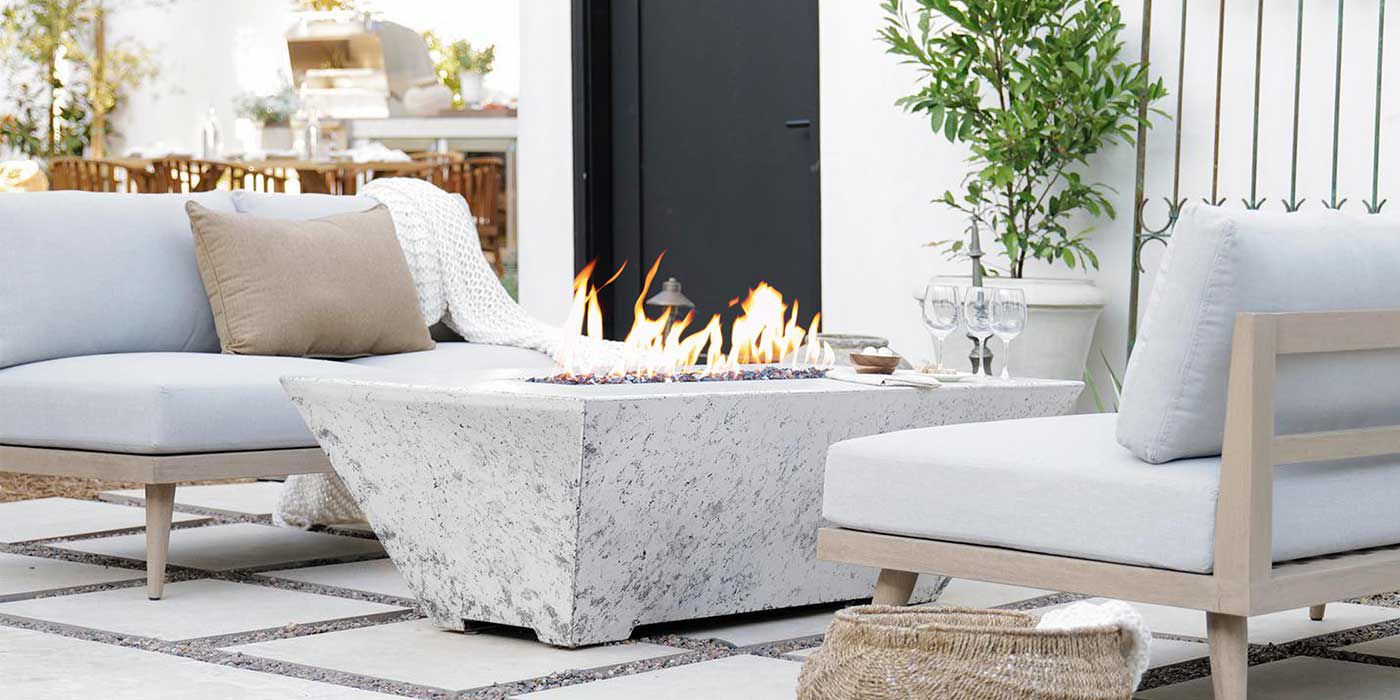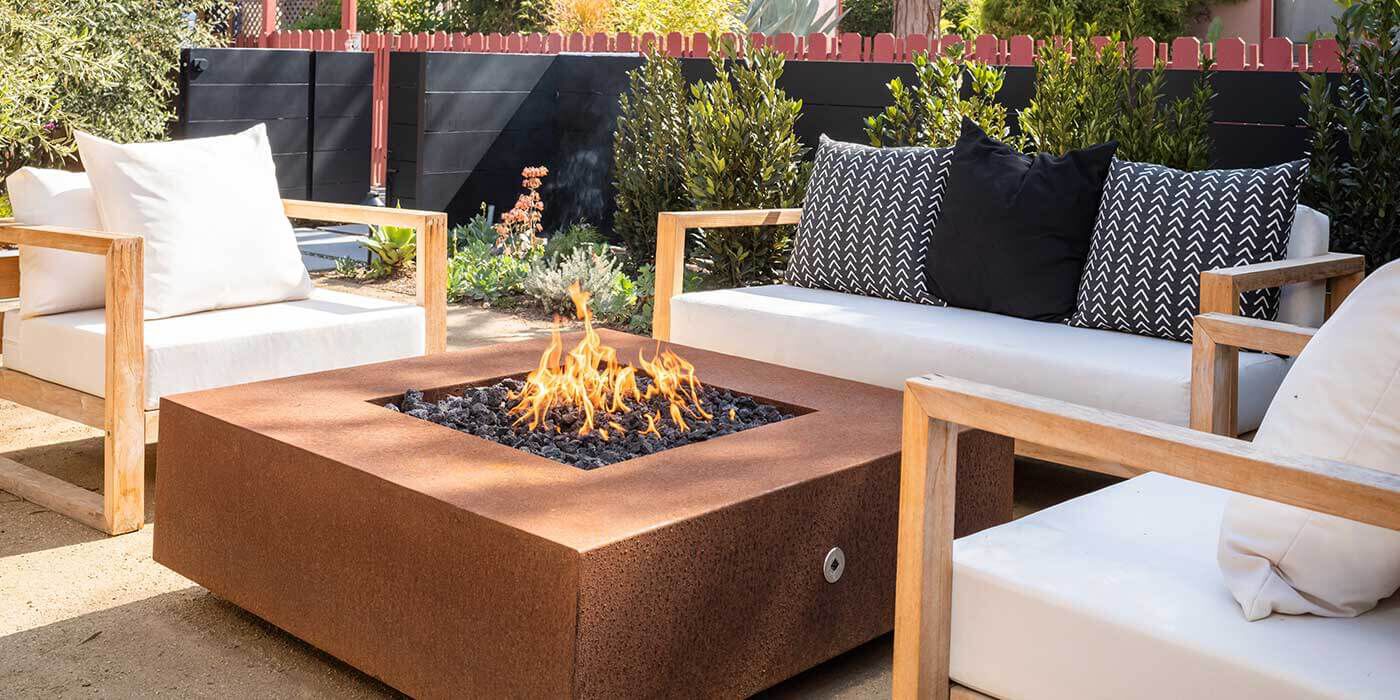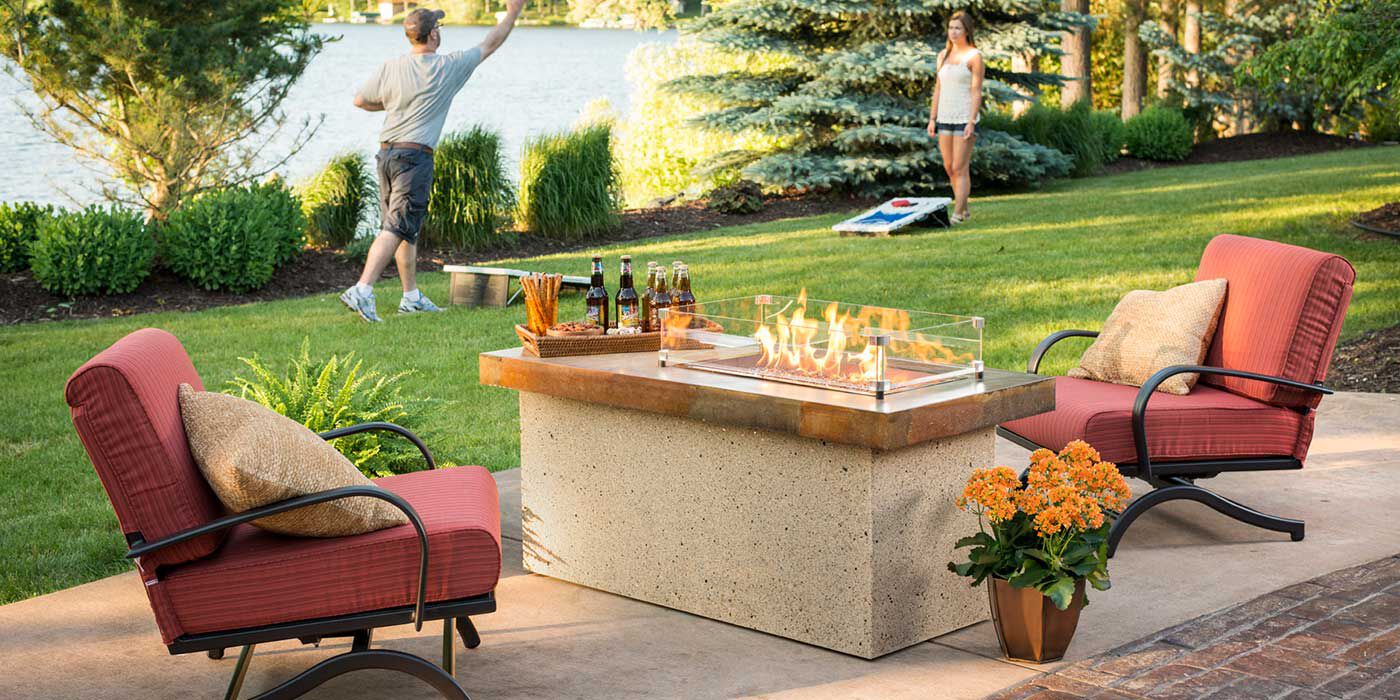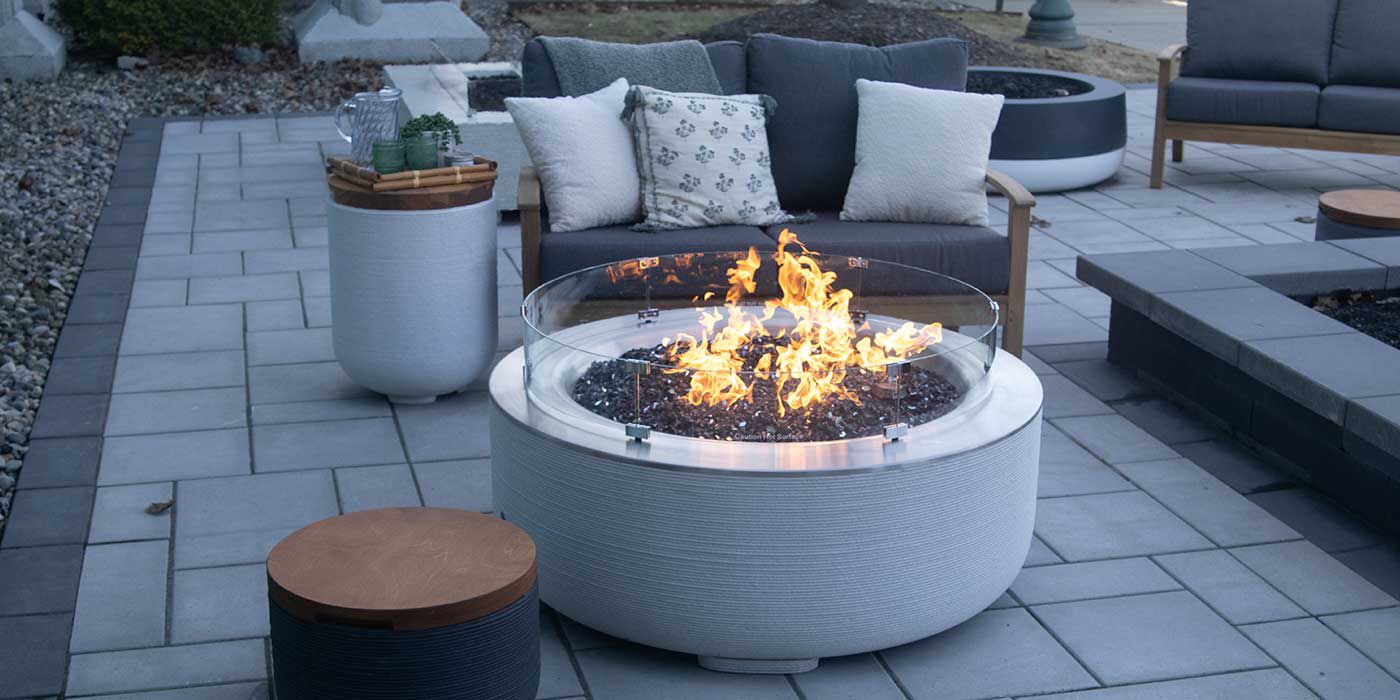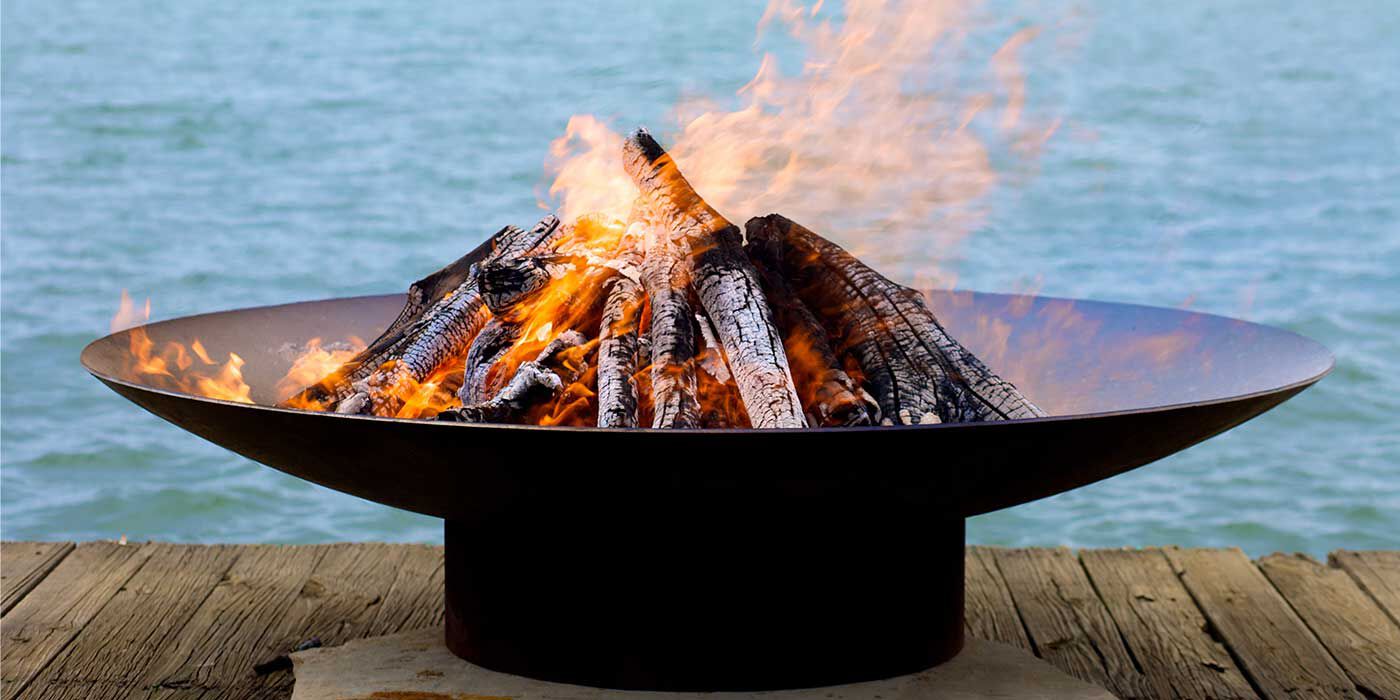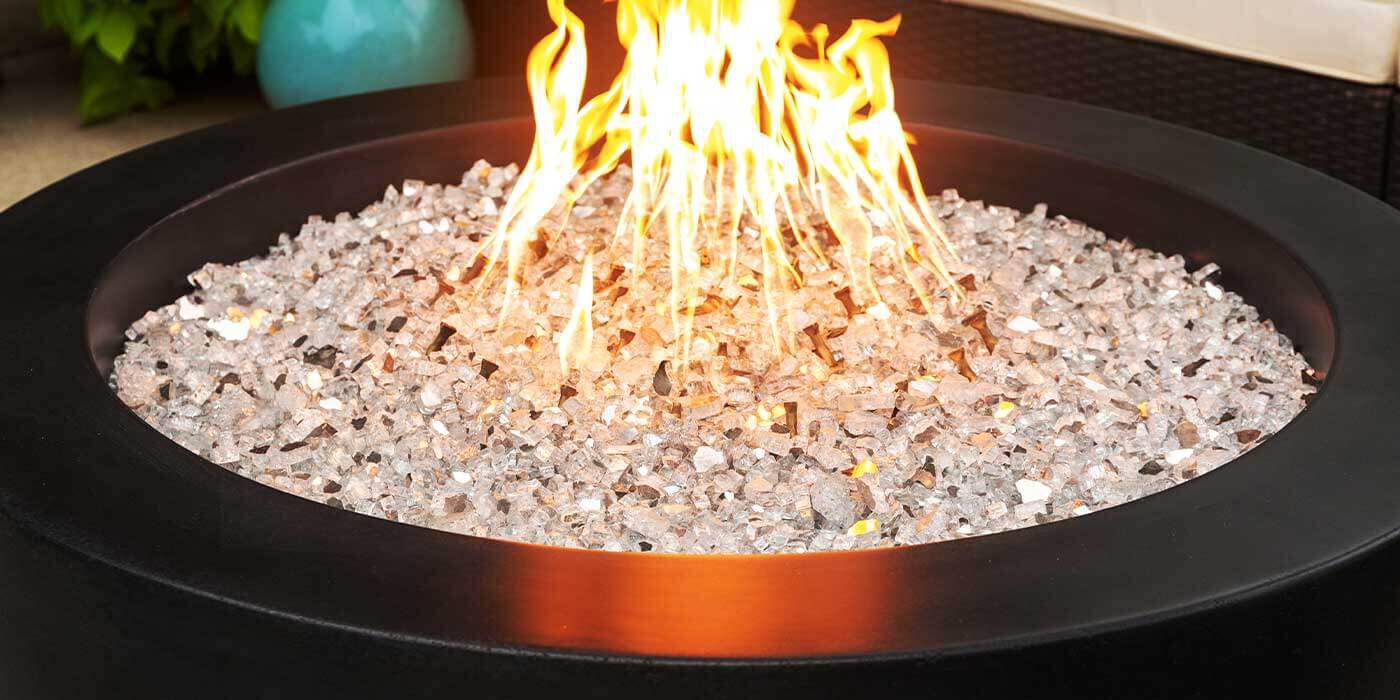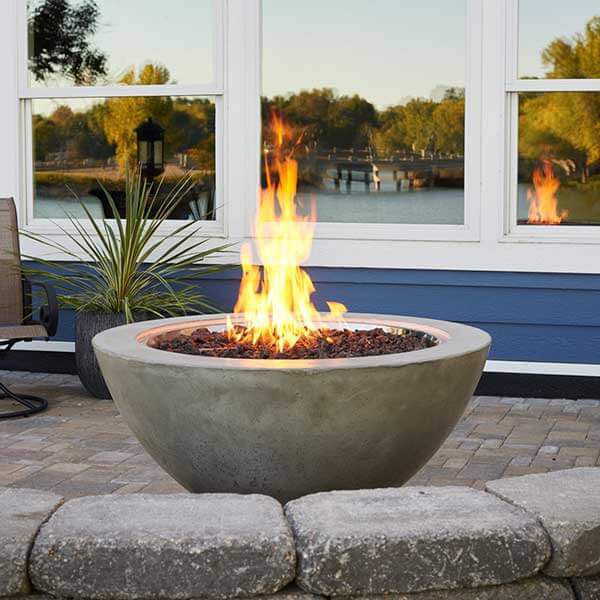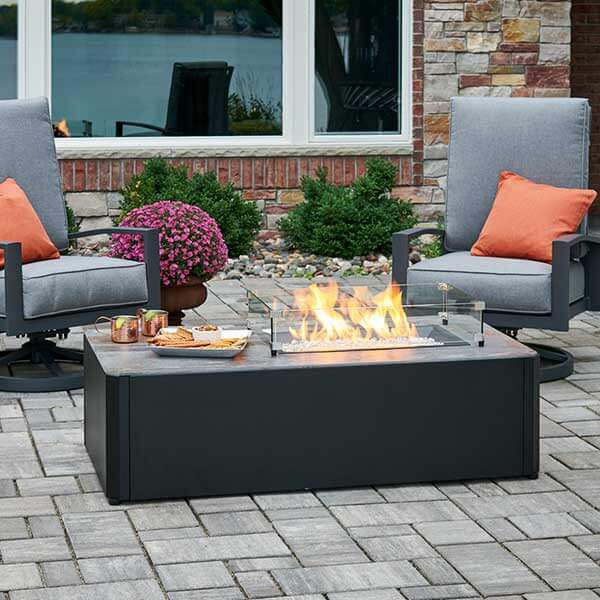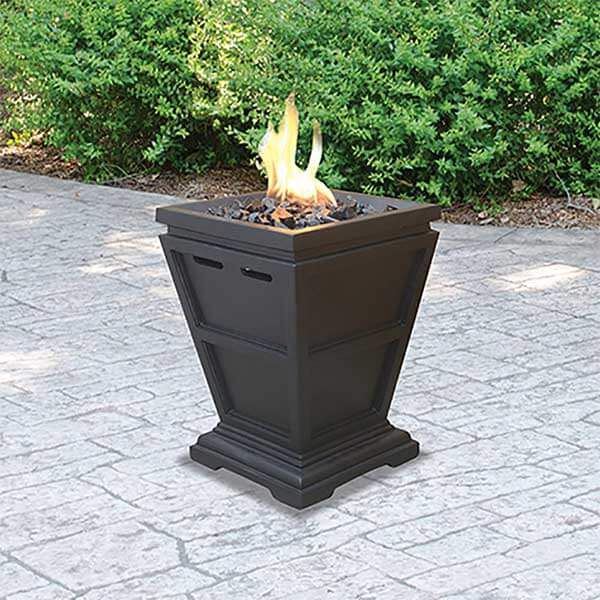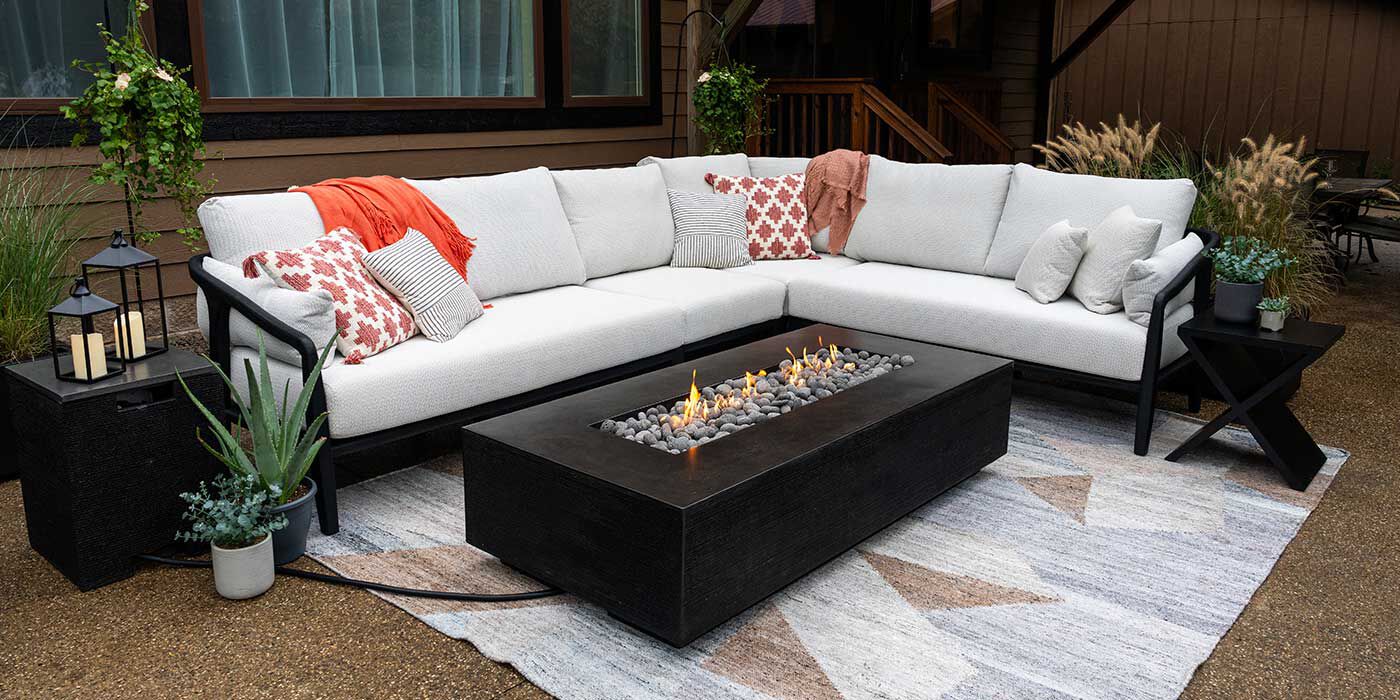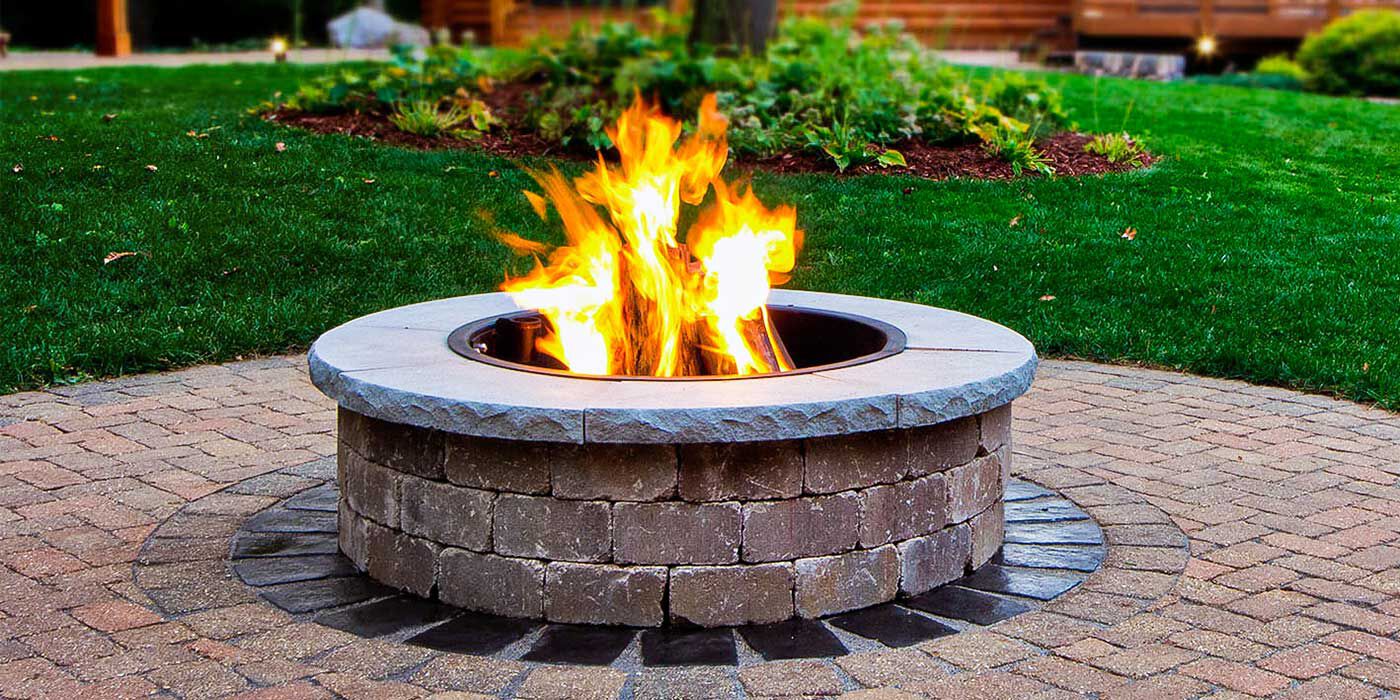By: Jeff O'Keefe, NFI Certified Master Hearth Professional
Last Updated: March 26, 2025
Adding a fire pit to your backyard enhances every outdoor occasion, whether you’re roasting marshmallows with the kids, unwinding after a long day, or entertaining your family and friends. It extends your living space to the backyard, giving you the option to relax outside even in the cooler months.
There’s a lot to consider when it comes to choosing a fire pit, from picking out a style that matches your space to researching local regulations.
Here are all the important steps you’ll need to take to find the perfect fire pit for your home.
Table of Contents
Check Your Local Regulations
Before you start shopping for a fire pit, check your city’s codes and regulations pertaining to outdoor fire pits. Some areas have strict about fire pit placement and open burning.
You can contact your city or county office and ask about fire pit regulations. They’ll be able to tell you what type of fire pits are allowed and any other codes you need to follow.
If you live in an apartment complex or condo, check your building codes or homeowners' association to see if there are any fire pit rules. If you’re renting a home, be sure to ask your landlord if you can add a fire pit to the property.
Fuel Type: Gas vs Wood Fire Pits
Fire pits work with three different types of fuel — Natural Gas, Propane, and wood.
Think about the kind of outdoor experience you want to have. Gas fire pits offer convenience and modern features, like remote operation and custom fire media. On the other hand, wood fire pits create a cozy, campfire-like atmosphere that turns your backyard into a rustic cabin getaway.
Natural Gas Fire Pits
If you plan on installing a permanent fire pit, consider hooking it up to a gas line. It will receive a constant flow of fuel, so you won’t have to worry about running out of wood or Propane.
Gas fire pits are easy to use and inexpensive to operate. They create clean-burning fires without smoke, fumes, or byproducts.
Depending on the burner system your gas fire pit comes with, you can also turn the fire on and off with a remote control or wall switch.
Keep in mind, connecting your fire pit to a gas line can limit its placement. Installing a gas line out into your yard may also require specific permits.
If you don’t have a gas line already, you’ll need to hire a licensed gas professional to install one and hook up your fire pit. A seasoned pro will also be able to tell you what permits you might need.
For a more in-depth look at gas fire pits, check out our Gas Fire Pit Buying Guide. You can also explore our top-rated gas fire pits for more inspiration!
Propane Fire Pits
If you want the convenience of a gas fire pit but aren’t interested in installing a permanent Natural Gas line, a Propane fire pit is your best option.
Like Natural Gas models, Propane fire pits are clean-burning and don't produce smoke, fumes, or byproducts. Most designs are lightweight and portable, so you can easily relocate your fire pit.
Many Propane fire pits feature “hidden tank” designs, providing a stylish way to hide your fuel source. You can stash a standard, 20-lb. Propane tank in the base of the fire pit and open a designated door to swap it out when it’s empty. This streamlines the look of your patio, creating a more upscale, uncluttered aesthetic.
Some Propane fire pits also offer matching enclosures to conceal your Propane tank. These coordinating enclosures can also double as outdoor side tables.
Wood Burning Fire Pits
If you’re looking for cozy, open flames, the sound of crackling embers, and the aroma of smoldering logs, there’s no substitute for a classic wood fire pit.
Wood burning fire pits are affordable, easy to set up, and produce intense heat. While they require a bit more effort to monitor and maintain than gas fire pits, the nostalgic, comforting atmosphere offered only by a real wood fire makes the effort worthwhile.
Learn more about wood fire pits with our comprehensive Wood Burning Fire Pit Buying Guide. To narrow down your options, check out our top five wood fire pits.
Fire Pit Media
If you purchase a gas fire pit, you’ll need fire pit media to go with it.
Media is placed on top of the burner to ensure the gas flow is distributed evenly across. This creates a more realistic flame presentation and hides your burner system from sight.
There’s a wide range of fire pit media styles available, including fire glass, lava rock, gas logs, and more. Use our Fire Pit Media Buying Guide to find the perfect finishing touch for your new outdoor focal point.
Fire Pit Materials
Common fire pit materials include aluminum, concrete, copper, glass-fiber reinforced concrete (GFRC), steel, stainless steel, cast iron, and stone.
Most commercially manufactured fire pits are made of steel, concrete, or copper.
Steel fire pits are lightweight and weatherproof, while concrete fire pits are heavier, more permanent fire pit options. Copper fire pits exude elegance and develop a beautiful, natural patina over time.
Some materials need more maintenance than others. Steel and concrete fire pits don’t require much upkeep, while copper fire pits must be polished regularly.
Consider the weather conditions in your area, too. For example, certain materials, like mild steel, may rust faster in humid, coastal regions.
Fire Pit Styles
A fire pit naturally becomes the focal point of any outdoor space. When choosing a style, consider how you intend to use it and what your backyard landscape looks like.
Fire Bowls
Fire bowls are perfect for areas with limited space. They feature shallow, bowl-shaped shells that showcase the flames and create a comfortable spot for fireside conversations.
Fire Tables
If you love to entertain and dine outside, a fire pit table is an excellent solution. They feature functional, table-style bases with wide outer ledges, so you can set your snacks and drinks down as you relax around the fire.
Fire Columns
Used mainly for ambiance and lighting, fire columns are ideal for small patios. You can also purchase multiple fire columns to illuminate an outdoor walkway.
Size and Scale
The right size fire pit depends on how large your outdoor space is and how many people you plan to accommodate.
Small fire pits are typically 36 inches wide or less. They’re used more for decoration than warmth.
Medium fire pits range from 36-45 inches wide. They’re still large enough to entertain up to 10 people, so you can set up seating around the fire.
Large fire pits measure 45 inches wide or more and provide reliable heat. They’re perfect centerpieces for spacious backyards and commercial settings.
Keep in mind, you’ll need about 5-7 feet of clearance around your fire pit for patio furniture. Never place your fire pit under trees, low-hanging plants, or near anything flammable.
How Much Does a Fire Pit Cost?
Fire pits can cost anywhere from $200 to $10,000 or more. The price depends on the fire pit’s size, what it’s made of, and what features it comes with.
Small to medium-sized fire pits made of stone, concrete, and powder-coated steel range from $300 to $2,000 or more.
For large or custom-designed fire pits, plan to budget at least $1,000 to $5,000 or more.
Thinking of Building Your Own Fire Pit?
You can either buy a fire pit or build one yourself. The project isn’t as daunting as you may think, even if it involves fire.
To build a fire pit from scratch:
Gas fire pits: Buy a pre-assembled enclosure, finish it with the material of your choice, and install a burner.
Wood burning fire pits: Buy a fire ring and construct a custom base using stacked stone, masonry bricks, or concrete blocks.
Get your project started with these three easy DIY fire pit ideas.
We’re Here to Help
Need some help finding the perfect fire pit for your home? Call and talk with an NFI-Certified expert today at 800.919.1904.
More Resources
Build the fire pit of your dreams in less than a day with these easy DIY fire pit ideas.
Want to add a fire pit to your wood deck? Find out if it’s safe.
Before you install a fire pit under your covered patio, make sure you follow the proper precautions.
 |
Jeff O'Keefe is a skilled Technical Sales Representative with a decade of experience at Woodland Direct. As an NFI-Certified Master Hearth Professional, Jeff has helped clients complete a variety of projects, from selecting a fire pit to customizing an indoor fireplace. When he's not working, Jeff escapes to The Great Outdoors. He enjoys exploring new hiking trails, fishing, hunting, and dirt biking. His love for adventure and the outdoors is reflected in his passion for creating warm, inviting spaces that bring people together. Call Jeff or one of our experts in fire at 800.919.1904. |
